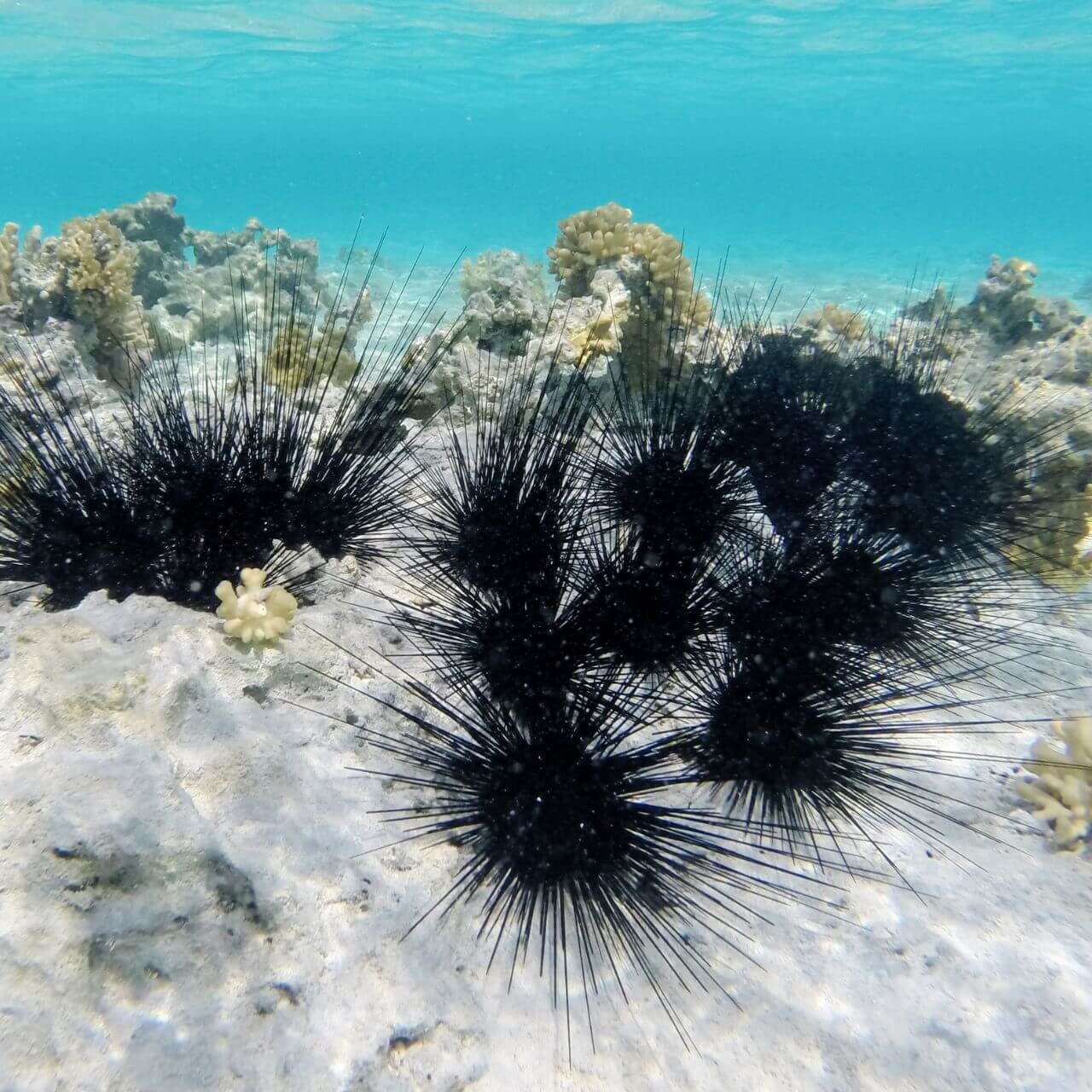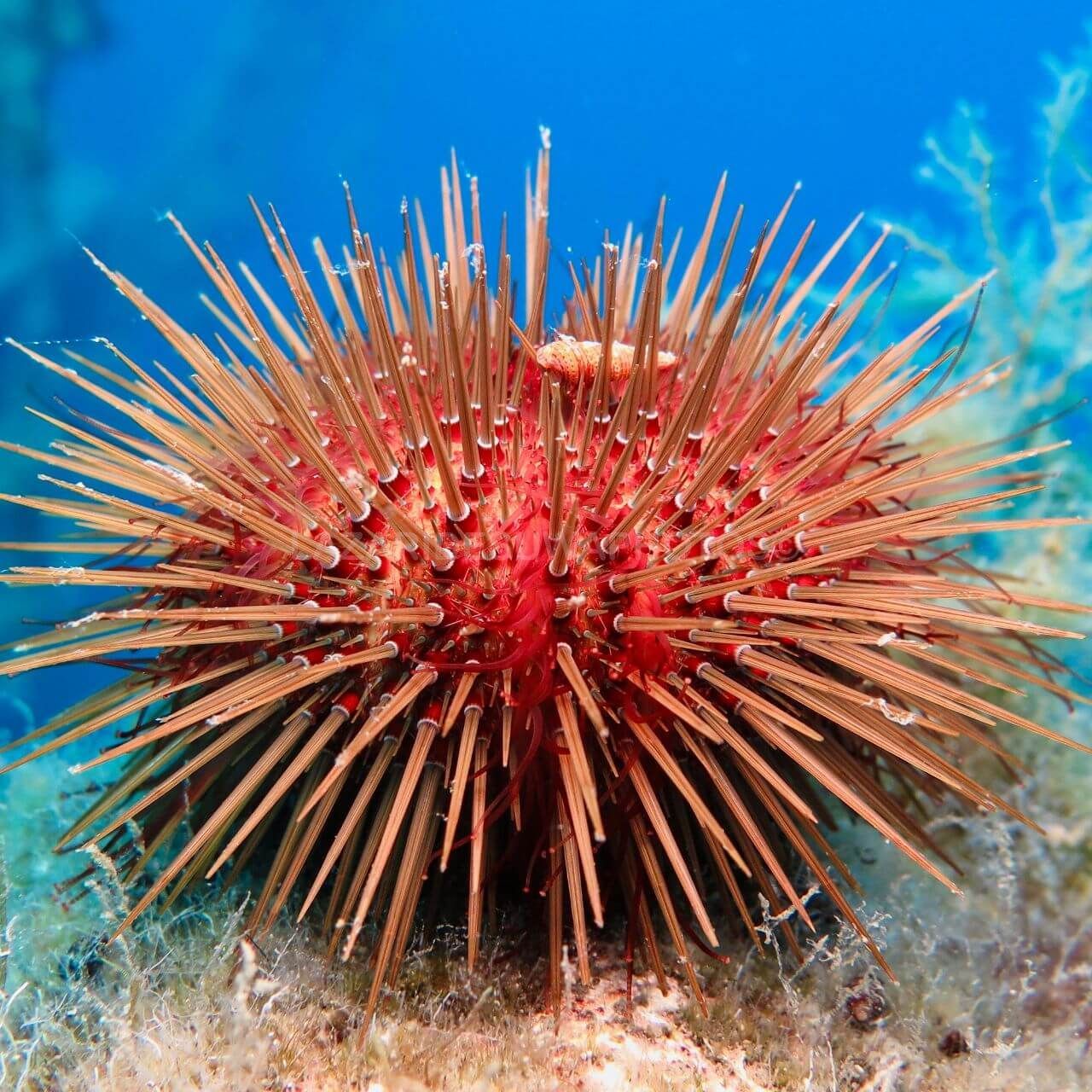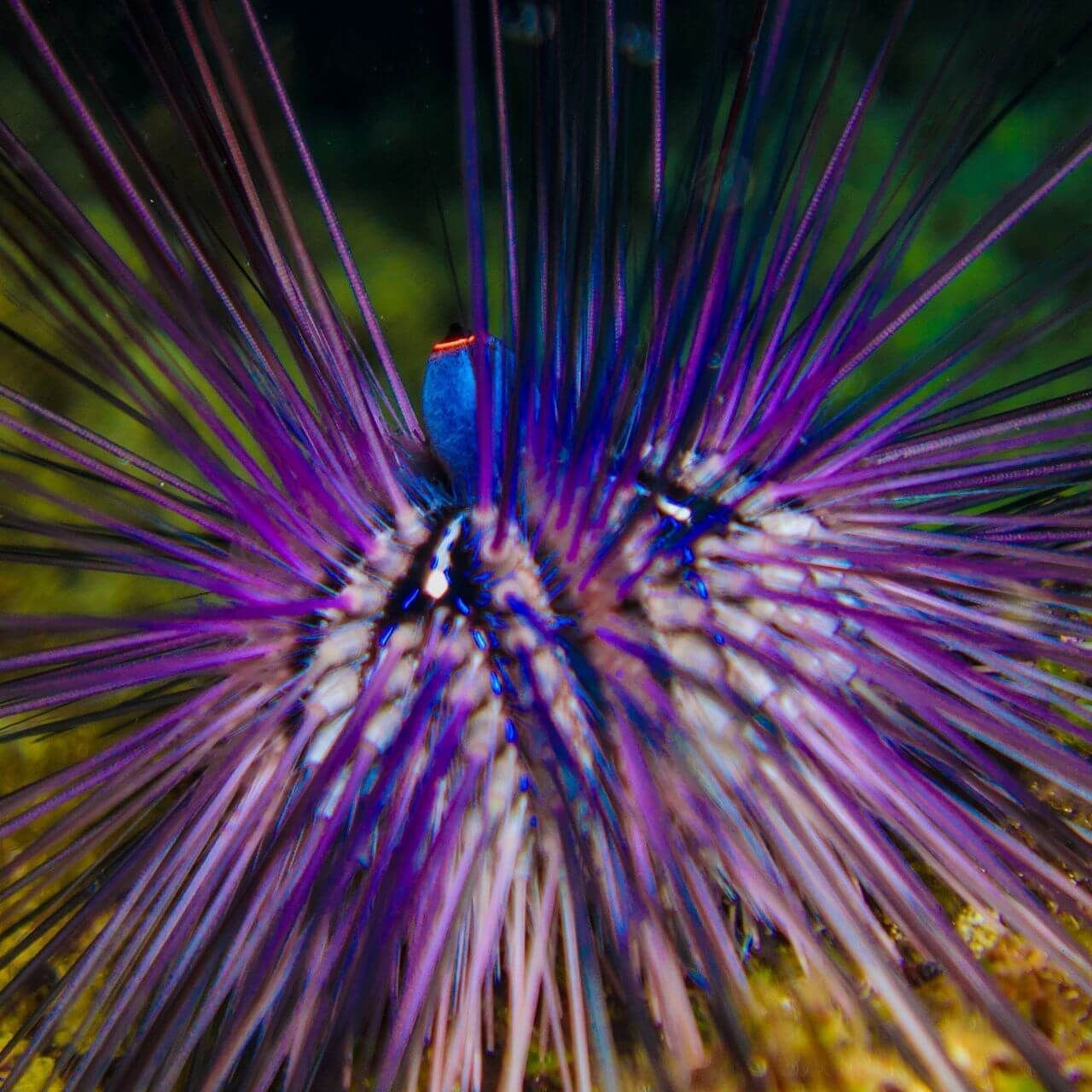Sea Urchins

Let's Learn About Sea Urchins
Word of the Week
Tube Feet
Tube feet are long, flexible structures with suction cups on the tip.
sea urchins and sea stars use tube feet to move and to taste/smell.
On sea urchins, tube feet are located between their spines.
Fast Facts

Where do sea urchins live?
Sea urchins are found along the ocean floor.
They are found in many habitats, such as coral reefs, tide pools, kelp forests, the deep sea, and more.
What do sea urchins eat?
Most sea urchins are herbivores.
They feed primarily on algae growing on rocks. They also feed on kelp and microscopic algae called phytoplankton floating through the water.


What traits do sea urchins share?
Sea urchins are a class of animals that...
- Are benthic, meaning they live on the sea floor.
- Defend themselves with spines.
- Move around and taste/smell with tube feet.
- Have a mouth with five teeth on the underside of their body.
How many sea urchins are there?
There are more than 900 species of sea urchins.
Some sea urchins are endangered while others are overpopulated. Sea urchins can be problematic when their population grows too large, especially in kelp forests.

Species Spotlight
Sand Dollars
Order: Clypeasteroida
Most of us picture sand dollars as chalky, white disks. Most sand dollars washed up on the beach are already dead. Their white skeletons are all that remain. Sand dollars look much different when alive!
Sand dollars, which are also called also called sea cookies and sea biscuits, are a group of flattened sea urchins. Like all sea urchins, they are benthic and use tube feet to crawl around. Most sea urchins live in rocky environments, but sand dollars are usually found on sand. They burrow some (or all) of their flat bodies to stay hidden from predators.
When feeding on plankton drifting by, they lift themselves vertically in the water. Young sand dollars also eat sand. Scientists hypothesize they eat sand particles to weigh their bodies down to avoid getting washed away in ocean currents. They use their tube feet to pass sand and tiny food pieces toward their mouth at the center of their body.
While most sea urchins have long, sharp spines, sand dollars do not. Their spines are small and thin, making some sand dollars look fuzzy. Sand dollars do not use their spines to avoid predators, but they use them for breathing. Some spines have small, hair-like structures called cilia that absorb oxygen. Other sea urchins breathe in the same way!
While they may not look like other sea urchins, they have many traits in common.
Conservation Corner
Leave Treasures on the Beach
One of the best parts about visiting the beach is looking for natural treasures like sea shells and sand dollars. Finding a colorful shell or perfect sand dollar is exciting. Sometimes, we even want to take these perfect treasures home.
Unfortunately, taking these natural treasures from the beach harms coastlines in a few different ways. Full shells along the shore are homes for hermit crabs, small fish, and even octopuses. Some have barnacles or other animals living on them. Removing shells makes it harder for these animals to find shelter. But what about the shells and sand dollar skeletons broken apart by crashing waves?
The fragments of broken shells and sand dollars get mixed into fine sand. They help hold the beach in place. Without these fragments, the fine sand easily washes away with the tide, causing the beach to erode over time.
Instead of taking shells and sand dollar skeletons home, take photos or create drawings in a nature journal. Photograph your favorite shells or sand dollars and print them out to hang on your walls. Bring pencils and markers to the beach and turn your favorite treasures into creative art. This allows you can remember your exciting beach day while keeping the beach and its inhabitants safe.
Learn More!
Glossary
Adaptation
The process by which a species becomes more fit for its environment over the course of several generations. It is a result of natural selection.
Aristotle's Lantern
The mouth of a sea urchin containing 5 teeth located on the underside of their body.
Benthic
Referring to an organism that lives at the bottom of a body of water (like a pond or ocean).
Calcium Carbonate
Hard, chalky substance that makes up the hard outer structure of Echinoderms, corals, snails, clams, and other invertebrates.
Echinoderm
The phylum of invertebrates containing sea urchins, sea stars, and their relatives.
Food Web
A tool used by scientists to describe how energy is transferred through plants and animals in an ecosystem.
Herbivore
An animal that primarily eats plants or algae.
Invertebrate
An animal that does not have a backbone.
Larva
The immature phase of an animal that undergoes metamorphosis.
Nutrients
Substances that plants and animals need to grow and remain healthy.
Phytoplankton
Microscopic algae that float near the surface of aquatic (water) ecosystems.
Predator
An animal that hunts other animals for food.
Prey
An animal that is hunted and eaten by another animal.
Species
A closely related group of animals with similar characteristics that are capable of reproducing (example: tigers).
Test
The hard outer structure of a sea urchin.
Tube Feet
The long, suction cup structures used by Echinoderms to move, breathe, smell/taste, and feed.
Vertebrate
An animal that has a backbone.








